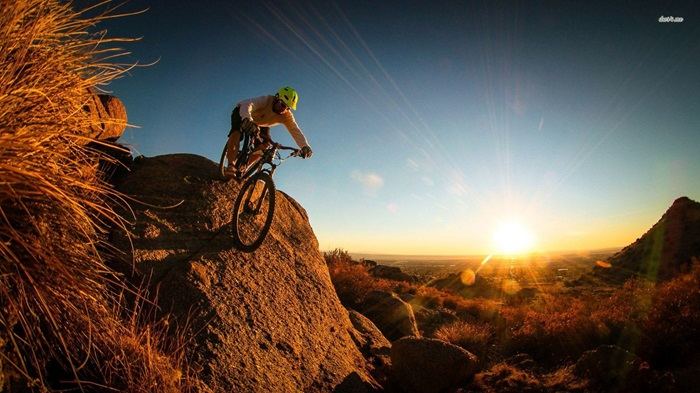Mountain biking is an exhilarating outdoor activity that combines physical endurance with the thrill of navigating rugged terrains. Beyond the sheer enjoyment it provides, mountain biking is also an excellent workout that burns a significant number of calories. In this comprehensive article, we will delve into the factors that influence calorie burn during mountain biking, how to estimate your personal calorie expenditure, and tips to maximize your workout for optimal health benefits.
The Science Behind Calorie Burn in Mountain Biking
Understanding Calorie Expenditure
Calories are units of energy that our bodies use to perform every function, from basic metabolic processes to intense physical activities. The number of calories burned during any activity depends on various factors, including the intensity of the activity, the individual’s weight, and their overall fitness level.
Factors Affecting Calorie Burn
Intensity and Duration: The more intense and longer the ride, the more calories you burn.
Terrain and Trail Conditions: Uphill climbs and rough trails require more energy than flat, smooth paths.
Rider’s Weight: Heavier riders tend to burn more calories because they need more energy to propel themselves.
Biking Speed: Faster speeds generally increase calorie expenditure.
Environmental Conditions: Wind resistance, altitude, and temperature can also impact calorie burn.
Basal Metabolic Rate (BMR) and Activity Level
Your Basal Metabolic Rate (BMR) is the number of calories your body needs at rest to maintain vital functions like breathing and circulation. When you engage in physical activities like mountain biking, your calorie burn is a combination of your BMR and the additional energy required for the activity.
How to Estimate Calorie Burn While Mountain Biking
General Estimates
On average, mountain biking can burn between 500 to 1,000 calories per hour. This wide range depends on the factors mentioned earlier. Here’s a more detailed breakdown based on intensity levels:
Light intensity (easy trails, minimal elevation): 400-600 calories per hour
Moderate intensity (mixed trails, some elevation): 600-800 calories per hour
High intensity (challenging trails, significant elevation): 800-1,000+ calories per hour
Using Heart Rate Monitors and Fitness Trackers
Heart rate monitors and fitness trackers provide more accurate estimates of calorie burn by taking into account your heart rate, age, weight, and intensity of the workout. Devices like Garmin, Fitbit, and Apple Watch can be particularly useful for tracking your performance and calorie expenditure.
Online Calorie Burn Calculators
Several online calculators can provide estimates based on your weight, duration, and intensity of the ride. While these tools offer convenient approximations, they may not account for all individual variables.
Maximizing Calorie Burn During Mountain Biking
Choosing the Right Trails
Opt for trails with varied terrains and elevations to increase the intensity of your ride. Hills and technical sections require more effort, thus burning more calories.
Incorporating Intervals
Interval training, which involves alternating between high-intensity bursts and recovery periods, can significantly boost calorie burn. For example, sprint up a hill for 30 seconds, then ride at a moderate pace for a minute.
Maintaining Proper Nutrition
Fueling your body with the right nutrients before and after your ride ensures you have enough energy to perform at your best and recover efficiently. Focus on a balanced diet rich in carbohydrates, proteins, and healthy fats.
Staying Hydrated
Proper hydration is crucial for maintaining performance and calorie burn. Dehydration can lead to fatigue and decreased intensity, reducing overall calorie expenditure.
Health Benefits Beyond Calorie Burn
Cardiovascular Health
Mountain biking is an excellent cardiovascular workout that strengthens the heart, improves circulation, and reduces the risk of heart disease.
Muscle Strength and Endurance
The varied terrain and technical aspects of mountain biking engage multiple muscle groups, enhancing strength and endurance. Key muscles worked include the quadriceps, hamstrings, glutes, calves, and core.
Mental Well-being
The combination of physical exertion and immersion in nature boosts mental health. Mountain biking can reduce stress, anxiety, and depression while enhancing mood and cognitive function.
Weight Management
Consistent mountain biking helps in weight management by burning calories and building lean muscle mass, which increases overall metabolic rate.
see also: How To Get In Shape For Mountain Biking
Tips for Safe and Effective Mountain Biking
Proper Gear and Equipment
Wearing appropriate gear, such as a helmet, gloves, and padded shorts, ensures safety and comfort. Maintaining your bike in good condition also prevents accidents and injuries.
Warm-Up and Cool-Down
A proper warm-up prepares your muscles and cardiovascular system for the ride, while a cool-down helps in recovery and reduces muscle soreness.
Listening to Your Body
Pay attention to your body’s signals to avoid overtraining and injuries. Rest and recovery are as important as the workout itself.
Joining a Community
Mountain biking with a group or club can enhance the experience, provide motivation, and ensure safety through shared knowledge and support.
Conclusion
Mountain biking is not only a thrilling adventure but also a highly effective workout that burns calories and offers numerous health benefits. By understanding the factors that influence calorie burn and adopting strategies to maximize your efforts, you can make the most of your mountain biking sessions. Whether you are a beginner or an experienced rider, the joy of conquering trails while boosting your fitness levels is unmatched. So gear up, hit the trails, and unleash the power of pedals!
related topics:
- What Causes Lower Back Pain While Mountain Biking
- 8 Best Mountain Biking In The Us
- What To Wear Mountain Biking In The Cold

